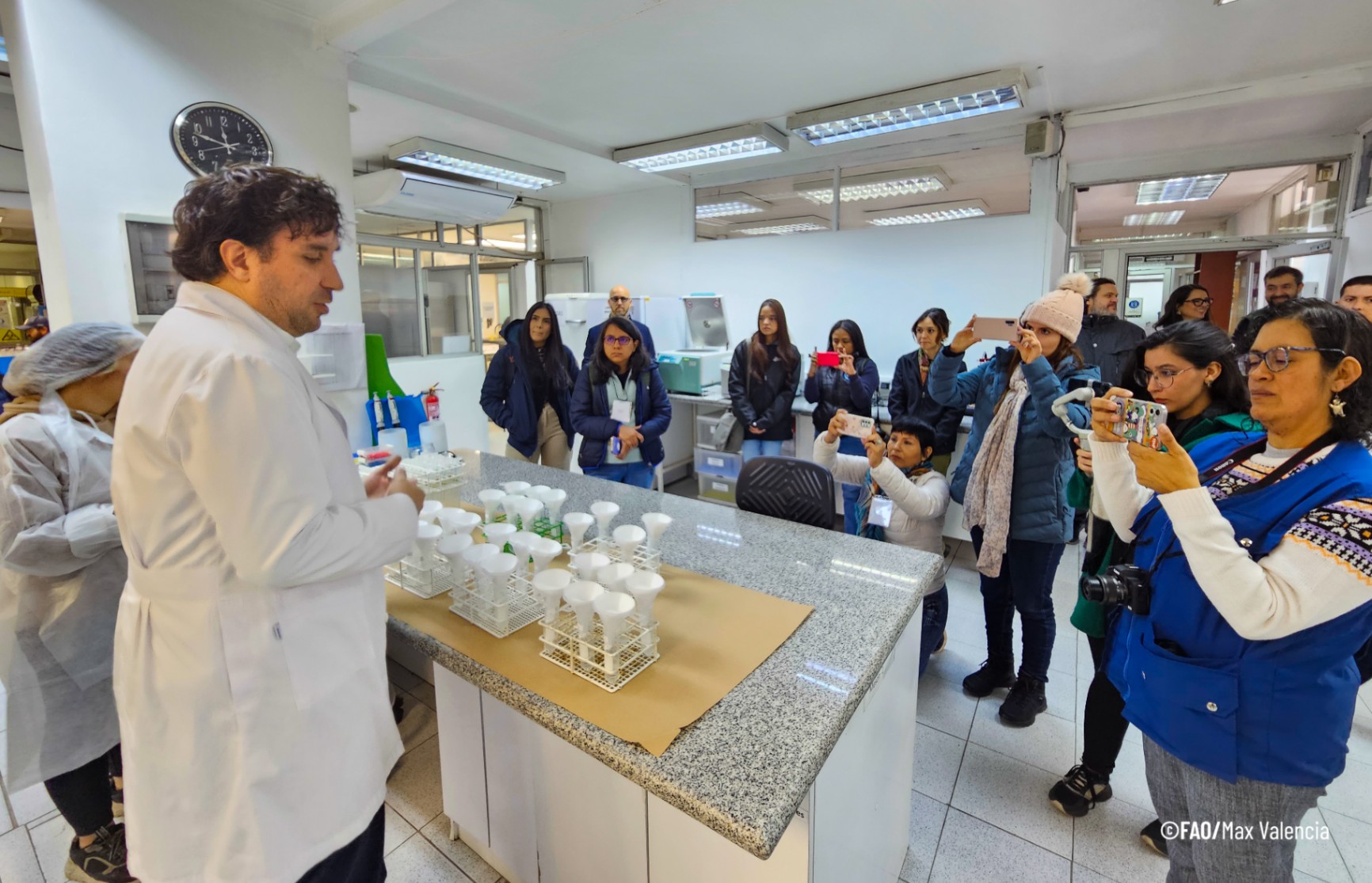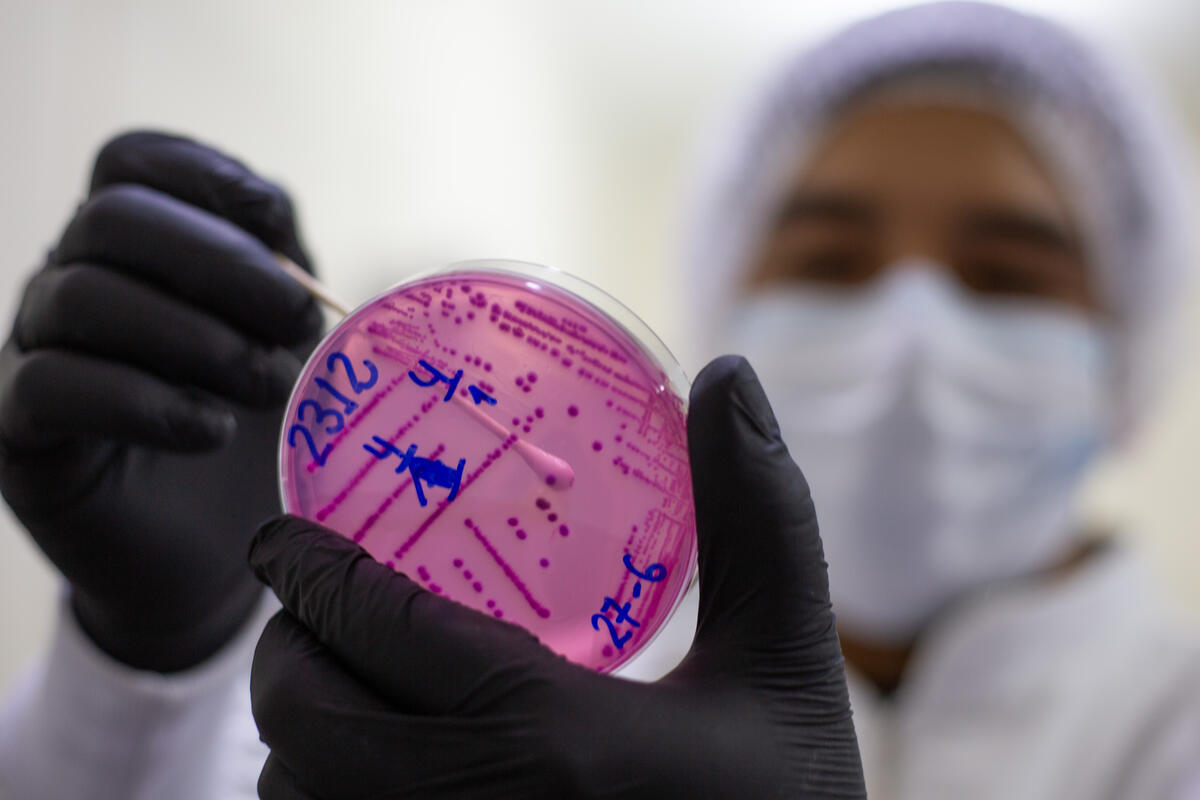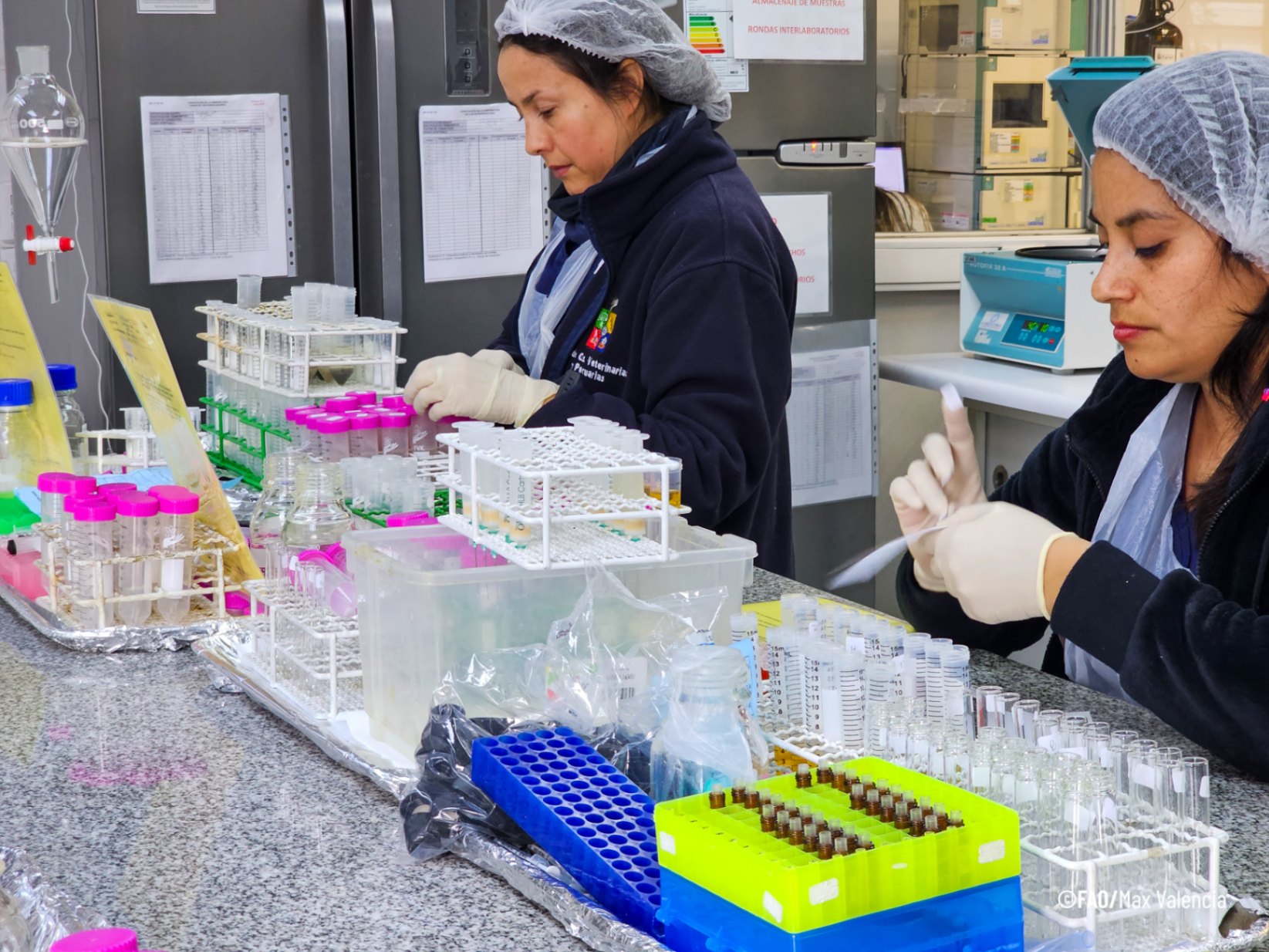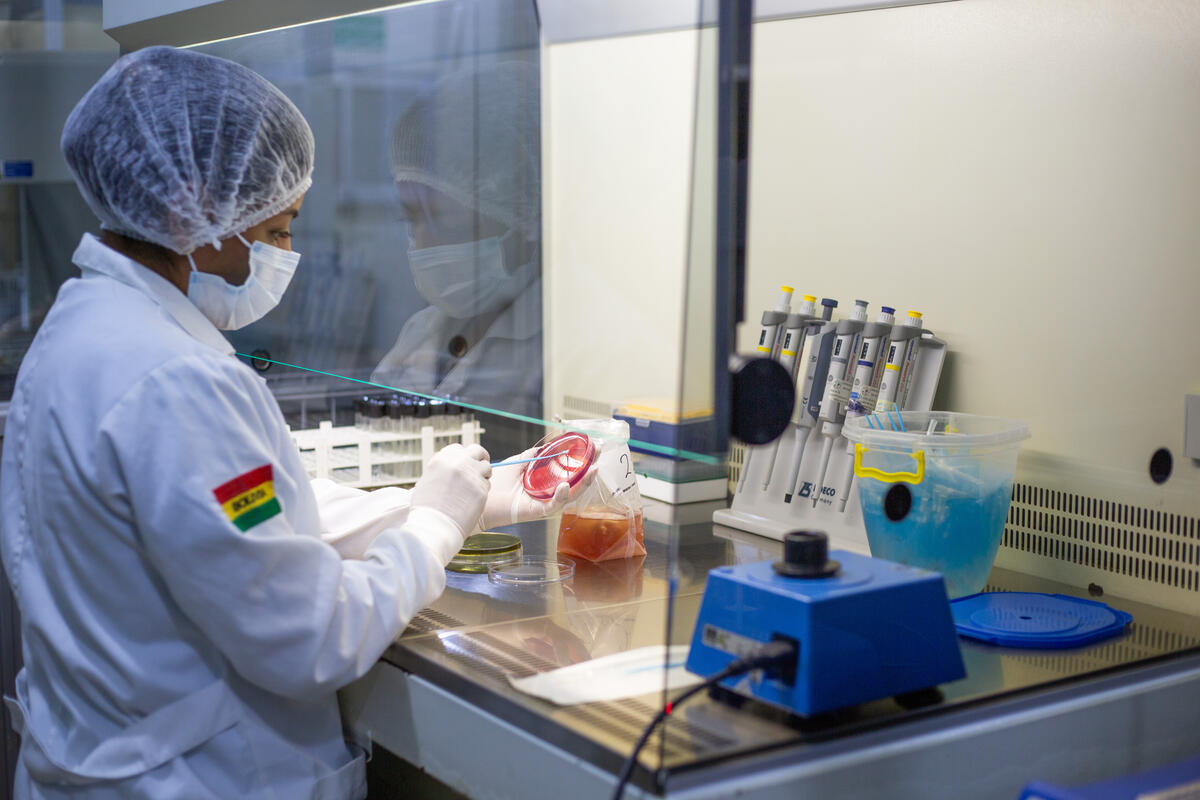Why is it important to reduce the use of antibiotics in agrifood systems?
The FAO provides five key recommendations to prevent antimicrobial resistance (AMR), including resistance to antibiotics, antivirals, antifungals, and antiparasitics, under the integrated "One Health" approach. Increasing funding and improving surveillance are among the Organization's key recommendations
.jpg?sfvrsn=c5e53f2_3)
©FAO/Max Valencia
The Food and Agriculture Organization of the United Nations (FAO) has called for urgent action to address the health crisis posed by antimicrobial resistance (AMR), such as resistance to antibiotics, antivirals, antifungals, and antiparasitics.
During World Antimicrobial Awareness Week (WAAW), with the 2024 theme “Educate. Promote. Act now”, FAO presented five key measures to mitigate the impact of AMR.
According to a study published in The Lancet, an estimated 5 million deaths were associated with AMR in 2019, including 1.27 million directly attributable to it.
“To minimize the emergence of antimicrobial-resistant bacteria affecting humans and animals, reducing the need for antibiotic use and promoting more sustainable practices is crucial. This directly supports Better Production, contributes to a Better Environment, and leads to a Better Life,” stated Andrés González, FAO Animal Health and Sustainable Livestock Officer.
Five key actions to prevent antimicrobial resistance
1.- Integrate AMR efforts into "One Health" policies
“One Health” promotes an integrated approach to the health of people, animals, plants, and the environment, fostering sustainable production, animal health, food safety, and AMR prevention. Within the context of 2024 activities, FAO emphasized that education and awareness campaigns must adopt this perspective, promoting preventive actions across all sectors and reducing antimicrobial use.

2.- Increase funding
Greater financial resources and incentives must be allocated to achieve the objectives of national AMR action plans, considering all actors with roles and responsibilities in this area.

3.- Enhance surveillance systems and data sharing
Establishing national AMR surveillance systems is essential to monitoring and responding more effectively to resistance trends. Integrating data from academia and the private sector is also critical to strengthening information on antimicrobial use and resistance patterns.

4.- Strengthen regulations and legislation
Stricter enforcement of laws and regulations on the production, marketing, use, and proper disposal of antimicrobials in human and animal medicine is necessary. This will sustainably reduce environmental contamination, chemical residues in food, and the risk of resistance.

5.- Support multisectoral efforts to raise awareness and change behaviors
Coordination among various ministries (health, education, agriculture and livestock, environment, finance, etc.), as well as with civil society and the private sector, is key to fostering synergies in awareness and promoting good practices for antimicrobial use. This collective response is essential to transform erroneous practices and habits.

These five key actions were discussed during the webinar “Antimicrobial Resistance: Educate. Promote. Act now” organized by FAO, as well as during the “Symposium on Antimicrobial Resistance: Challenges and Tools for the AMR Future”, held by the British Embassy in Santiago and the Chilean Food Safety and Quality Agency, with FAO's support.
Contact
Martina Salvo Communications Consultant, Regional Initiative for Sustainable and Resilient Agriculture FAO [email protected]
